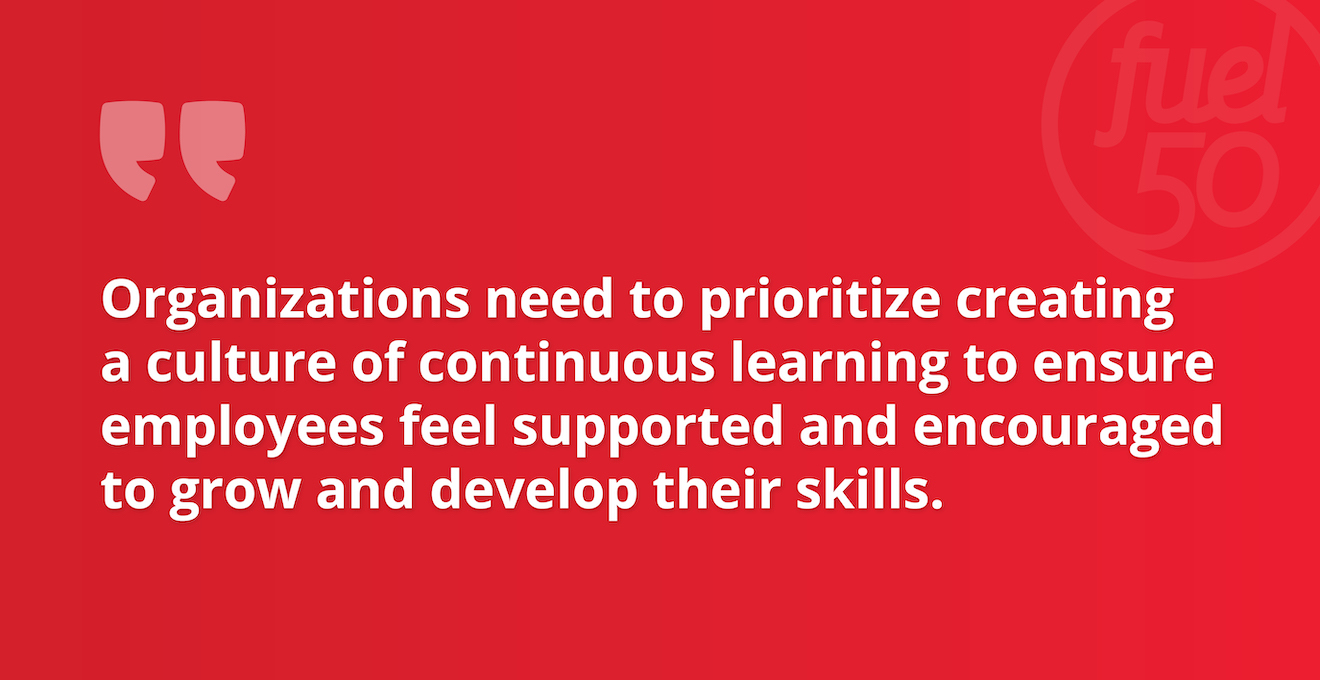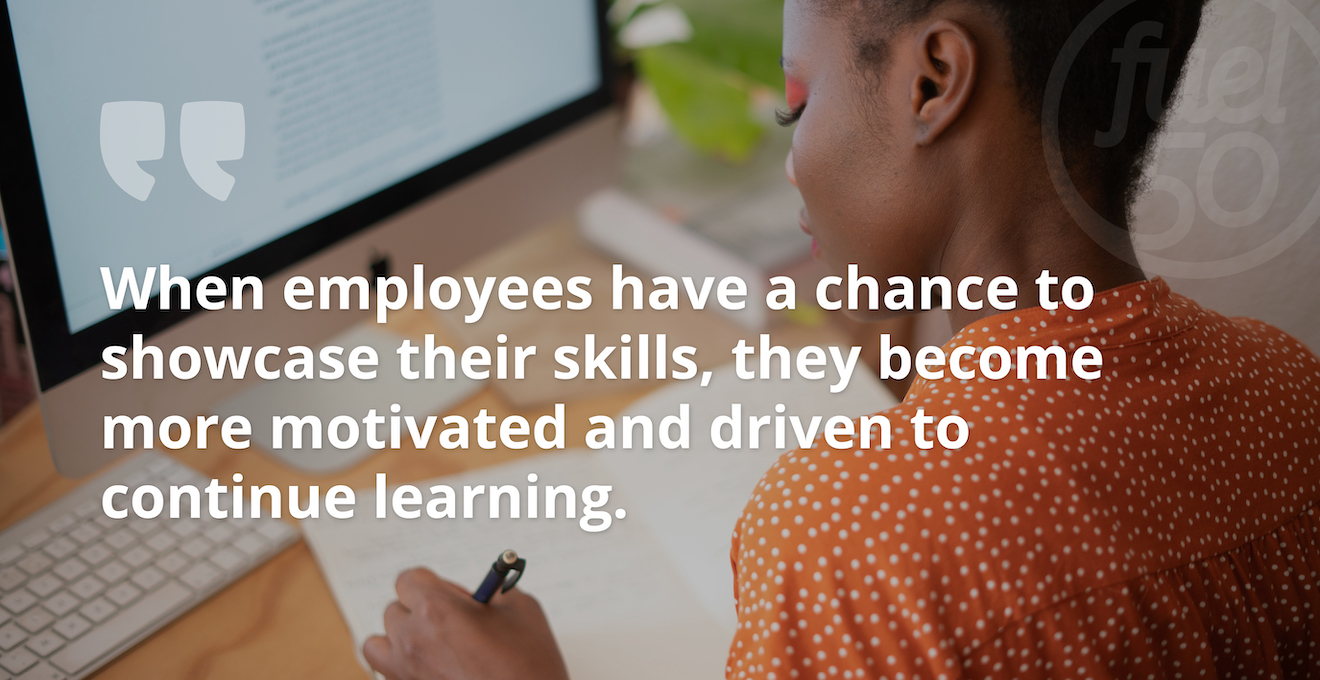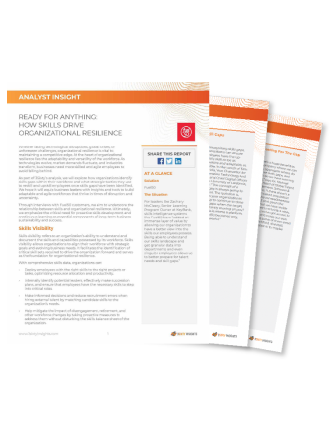Never stop learning; for when we stop learning, we stop growing.
This quote from Loyal ‘Jack’ Lewman rings true, especially in today’s ever-changing work environment. With many organizations needing to pivot and respond to changing circumstances, workers’ expectations are constantly evolving, and so too are the skills needed on the job.
According to LinkedIn’s 2022 Workplace Learning Report, skills needed for the same occupation changed by 25% from 2015 to 2021. If things continue at this rate, skills are expected to change by about 40% in 2025. To keep up, employees need to engage in continuous learning, growth, and development to expand their knowledge and acquire new skills.
While we all know the importance of learning and development, how many of us are taking full advantage of it? Organizations can have the most effective programs in place, but at the end of the day, it is up to the employee to have the motivation and drive to learn. And many employees do, with 74% ready to learn new skills or re-train to remain employable in the future. That said, organizations still need to prioritize creating a culture of continuous learning to ensure employees feel supported and encouraged to grow and develop their skills.
Here are four ways organizations can support continuous learning in the workplace:
1. Let employees take the lead in their development
Organizations often make the mistake of controlling their people’s development without considering their individual wants and needs. This results in a disconnect between what the organization says is important and what the employee truly wants to learn. It is important to pinpoint skills that are valuable to both the organization and the employee as an individual. Their motivation to learn will be much greater when their career and personal development are fully considered

A survey conducted by HBR and Degreed of over 700 professionals found that 85% of employees understand their skills gaps, and 82% know just what skills they need for career advancement. This shows that employees are aware of where they need to improve and are willing to learn the skills needed to bridge those gaps. Leaders must take the time to understand what employees want and allow them to lead their own development.
When data management company NetApp needed to reskill their workforce, they focused on having more authentic and productive conversations between employees and managers to truly understand each individual’s unique career journey. Larry McAlister, VP of Global Talent at NetApp sums up the benefits of this by saying:
We now have vision into everyone in the company, what they want to do and where they want to go… We are no longer flying blind, and we have more insight now than we’ve ever had in the history of HR.
2. Provide Time & Resources for Learning
We know that majority of employees are aware of their skills gaps and want to learn and grow, so then why aren’t they using the learning resources available to them? The truth is, employees simply feel like they don’t have the time in between their day-to-day workloads and the unexpected tasks that come with any job. And if employees aren’t finding the time to learn, then learning and development (L&D) programs won’t be as effective as they could be.
Industry leaders see two solutions to this challenge:
- Managers need to be involved. While employees are determined to upskill, it is often that extra nudge or reminder from their manager that encourages them to set time aside for development. In fact, 56% of employees said they would spend more time learning if their manager recommended courses to them. Having managers invested and encouraging learning ensures that L&D doesn’t continually get pushed aside in lieu of other projects.
- User-Friendly Learning Platforms. Another solution is to implement a learning platform that makes it easy for employees to find resources – whether it be for when they do make time for learning, or for those unplanned moments where they are inspired to learn. Your people are busier than ever, so the last thing you want to do is create an extra barrier for employees to find the resources they are looking for. Having a platform that supports easy learning can go a long way in boosting engagement and learning activity.

3. Offer Learning Opportunities to Apply Their Knowledge
Along with providing learning and development, it is also essential to provide opportunities that allow employees to apply their new knowledge and skills. Offering relevant gigs, stretch assignments, or projects can give them a boost of confidence and a sense of accomplishment. Furthermore, it promotes employee loyalty and engagement. According to Glint data, having opportunities to learn and grow is now the number one factor that people say defines an exceptional work environment.
KeyBank understood the importance of L&D and implemented ‘Grow at Key’ using Fuel50’s AI opportunity marketplace so employees can not only gain insights into their personal values and skillsets but also find learning and development opportunities they need to increase their skills and grow into new or expanding positions across the enterprise. As a result, KeyBank saw over 2,500 upskilling or reskilling actions take place in a bid to close skills gaps and a 60% increase in training participation and usage.
When employees have a chance to showcase their skills, they become more motivated and driven to continue learning. Motivated employees are a major asset to an organization as they become more productive and committed to organizational growth. They have a sense of being an integral part of the company they work for, which in turn, helps to create a positive work environment.
4. Continuous Learning Calls for Continuous Evaluation
Learning and development is an ongoing journey and should be treated as such. HR leaders need to be continuously evaluating their learning programs to ensure they remain effective and to determine whether changes are needed to make it a more positive experience for employees. Employee surveys and post-training quizzes are a great way to gather regular feedback. It is also important to track data such as employee satisfaction, knowledge retention, and skills improvement to understand whether employees are getting the most out of your learning programs.
An Investment in Learning Pays the Best Interest
Endless support and encouragement from the top-down is what can differentiate an organization that simply has L&D programs in place from an organization that lives and breathes a growth mindset and cultivates a culture of learning. Yes, employees need to have the motivation and drive to learn, but it is up to the organization to facilitate and support their growth. When a culture of continuous learning results in greater employee retention, an increase in workforce agility, and 83% of employees feeling happier in their jobs, it is clear that the benefits are far-reaching and well worth the time and investment.












